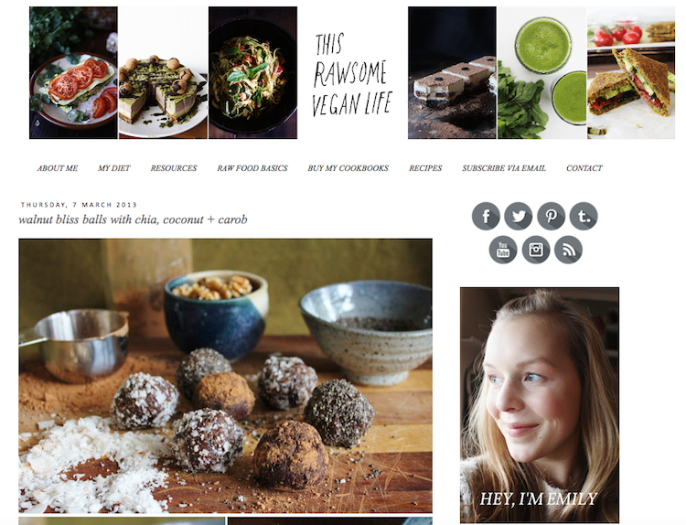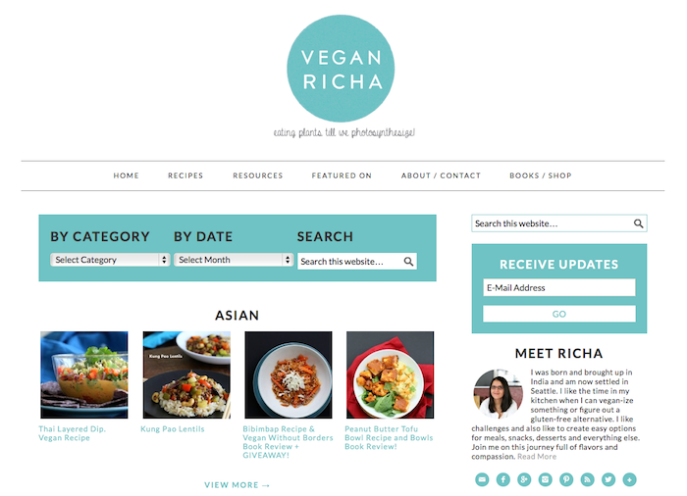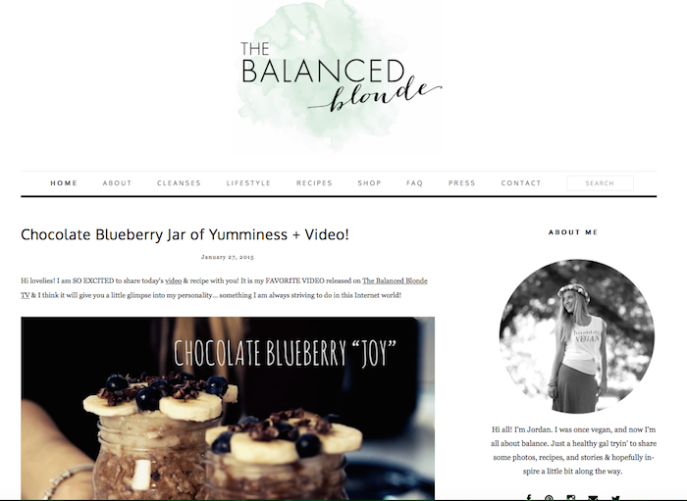VEGAN RICHA
Meet Richa: I was born and brought up in India and am now settled in Seattle. I like the time in my kitchen when I can vegan-ize something or figure out a gluten-free alternative. I like challenges and also like to create easy options for meals, snacks, desserts and everything else. Join me on this journey full of flavors and compassion.
THIS RAWSOME VEGAN LIFE
 Meet Em: You can call me Em. I eat raw plants because I love my body, the planet, and all beings. We are all equal and all-one! When I eat food, I want it to be beautiful, but not just in taste. I want it to nourish my body and soul, work in harmony with the earth, and allow other earthlings their right for freedom. I find that raw, organic plants fit the bill pretty well.
Meet Em: You can call me Em. I eat raw plants because I love my body, the planet, and all beings. We are all equal and all-one! When I eat food, I want it to be beautiful, but not just in taste. I want it to nourish my body and soul, work in harmony with the earth, and allow other earthlings their right for freedom. I find that raw, organic plants fit the bill pretty well.
THE BALANCED BLONDE
Meet Jordan: Hi all! I’m Jordan. I was once vegan, and now I’m all about balance. Just a healthy gal tryin’ to share some photos, recipes, and stories & hopefully inspire a little bit along the way.
THUG KITCHEN

ROASTED CHICKPEA AND BROCCOLI BURRITOS
This is a fan favorite that had to appear in the book, says Davis. “It’s a weeknight staple and one bad burrito you deserve to have in your life. Listen to the fans. They know what’s up.”
Makes 4 to 6 burritos
1 large yellow onion
1 red bell pepper
1 large crown of broccoli
3 cups cooked chickpeas*
3 tablespoons olive oil
1 to 2 tablespoons soy sauce, tamari, or Bragg’s**
2 teaspoons chili powder
1 teaspoon ground cumin
1 teaspoon smoked paprika
1/2 teaspoon ground coriander***
Cayenne pepper, to taste
4 cloves garlic, minced
1/2 lime
4 to 6 flour tortillas
Burrito trimmings such as spinach, avocado, cilantro, and Fire-Roasted Salsa (page 124)
1. Crank your oven to 425F. Grab a large rimmed baking sheet.
2. Chop up the onion, bell pepper, and broccoli ’til they’re the size of a chickpea. Place all the chopped up veggies in a large bowl with the cooked chickpeas. Pour in the oil and soy sauce, stir, and then throw all the spices in there. Mix until all the vegetables and shit are covered. Put all of that on the baking sheet and bake for 20 minutes.
3. Take it out of the oven—don’t f*cking burn yourself—then add the garlic and stir it around. Bake for another 15 minutes. The broccoli might look a little burnt at this point but that is the plan, so chill the f*ck out and take it out of the oven. Squeeze the lime juice over the pan and stir the roasted chickpeas and veggies all around. Taste and see if it needs more spices or anything.
4. Now make a motherf*cking burrito. We like ours with spinach, avocado, cilantro, and some fire-roasted salsa, but do your thing.
* Or two 15-ounce cans
** WTF? See page 10.
*** Or more cumin if you don’t want to go to the store.





